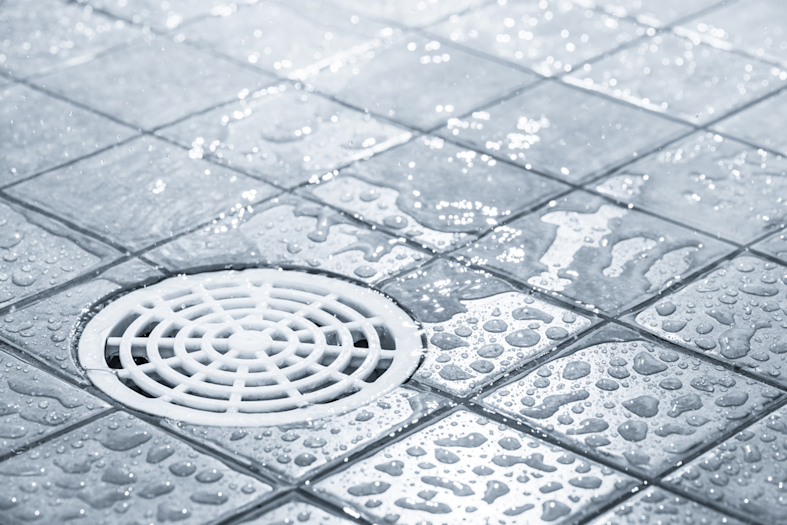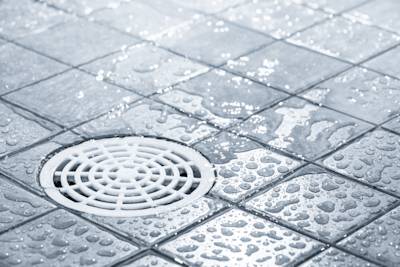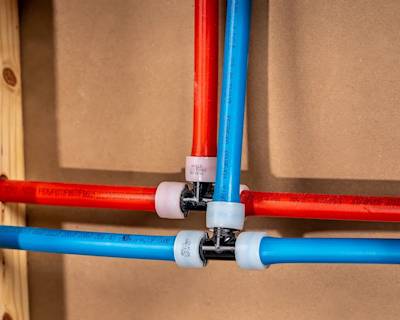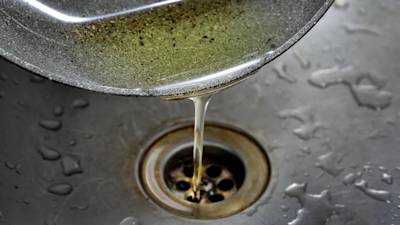It is a common sight in most homes and commercial buildings - the unassuming floor drain. At first glance, it may not seem to hold significant importance, but in truth, it plays an essential role in maintaining the structural integrity and cleanliness of buildings. Our focus today is on the indispensable piece of plumbing that is the floor drain.
Understanding the Importance of the Floor Drain
Floor drains are typically installed in areas where water spillage is a possibility such as the bathroom, laundry rooms, or basements. They serve the key function of flushing out excess water, therefore preventing the accumulation of stagnant water which can lead to foul odors, the growth of harmful bacteria, and structural water damage over time.
The Design and Functionality of a Floor Drain
Let's delve deeper and understand the design of a floor drain. Usually made of plastic, stainless steel, or brass, floor drains consist of three major parts:
- The grate or strainer: This is the visible part that traps solid debris while allowing water to pass through.
- The sump: Below the strainer is a depression designed to collect water, preventing it from overflowing.
- The pipe below: This pipe, connected to the sewer system, effectively disposes of the captured water.
A Closer Look at Different Types of Floor Drains
There are several types of floor drains, each tailored for different specific purposes:
General Purpose Drains
These are found in both residential and commercial buildings and effectively drain water from the floor surface.
Cleanout Drains
Primarily used for cleaning or unblocking the pipes, these drains help maintain the effective functioning of the plumbing system.
Deep Sump Drains
These are designed to handle high-volume water flow, making them useful in areas prone to heavy water usage or flooding.
Trap Seal Primers
These special types of floor drains funnel a small amount of water to the drain trap, maintaining a water seal that prevents sewer gases from entering the building.
Installing and Maintaining Floor Drains
Proper installation is a vital aspect in achieving optimal functionality of a floor drain. This process requires precision and technical skill to ensure that the drain is properly connected to the plumbing system and fitted to the floor surface. Using the best materials such as quality floor drain covers is equally important in maintaining the durability and sustainable efficiency of your drain.
Routine Cleaning and Maintenance
Just like any other piece of machinery in your home or office building, your floor drain requires regular cleaning and maintenance for optimal performance. Here are some maintenance tips:
- Cleaning the grate/strainer to prevent blockages
- Regularly checking for slow draining which can be a sign of clogging in the system
- Professional checking and cleaning should be scheduled periodically in order to troubleshoot potential issues and maintain the longevity of your drain.
Whether it's a tiny home, a sprawling commercial compound, or a cozy office space, the efficiency of your plumbing system is heavily reliant on the functionality of your floor drain. As such, it is of paramount importance to ensure your floor drain is installed properly, cleaned regularly, and maintained assiduously to enjoy the peace of mind brought about by smooth, uncompromised operation day in and day out.
Frequently Asked Questions about Floor Drains
What are the different types of floor drains?
There are several types of floor drains including general purpose drains, funnel drains, bell traps, and garage drains. The choice of the type of floor drain to install usually depends on the desired function and the location in the building where it is going to be installed.
How does a floor drain work?
Floor drains operate through a simple mechanism. Water that falls on the floor naturally flows towards the drain due to the sloping created during the installation process. Once in the drain, the water flows to the sewer system or a septic tank. Most drains have a trap that is filled with water to prevent sewer gases from coming back up into the room.
Can floor drains become blocked?
Yes, floor drains like any other type of drain can become blocked with dirt, debris, small objects, or a buildup of soap and grease. Regular cleaning and maintenance are necessary to keep a floor drain fully functional.
How can I unclog a blocked floor drain?
You may need to use a specific tool, like a plumber's snake or a hand auger, to dislodge the clog. In case the clog is severe, it may require professional help. It's recommended to wear appropriate protective gear when unclogging a floor drain to protect yourself from potential health hazards.
How should I maintain my floor drain?
Regular cleaning is essential to maintain your floor drain. You should aim to clean your floor drain at least once every three months. This should involve removing any visible debris around the grate and within the drain's opening. For a more thorough cleaning, consider hiring a professional plumbing service.
Can a floor drain cause a foul smell?
Yes, a floor drain can cause a foul smell if the water in the trap gets too low or evaporates entirely, allowing sewer gases to come back up through the drain. Filling the trap with water usually resolves this problem. If the foul smell persists, it is best to consult with a professional plumber for a possible solution.
Can a floor drain be installed in an existing building?
Yes, a floor drain can be installed in an existing building, but it's usually a complex task. It will involve breaking up the concrete floor, installing the drain and connecting it to the existing waste and sewer lines. Due to the complexity, it's often a job best assigned to an experienced plumber or contractor.
Are floor drains required by building codes?
Building codes vary by locality, but in many areas, floor drains are indeed required, especially in rooms where water accidents may occur. These rooms can include bathrooms, laundry rooms, and basements. Always make sure to check your local building codes or consult with a professional plumber or inspector before installing a floor drain.
What should be put in a floor drain to prevent bugs?
Adding a small amount of mineral oil to the drain can help to prevent bugs from crawling up through. The oil creates a barrier that insects cannot cross. However, keep in mind that this is just a temporary solution, and you might need a more permanent solution if your floor drain has a persistent bug problem.
Pros and Cons of Floor Drains
Pros of Floor Drains
Effective Water Drainage
- One of the major advantages of installing a floor drain is its effectiveness in draining water.
- Floor drains quickly remove standing water, helping to prevent water damage.
- This functionality is particularly beneficial in wet areas like bathrooms, basements, and garages, where liquid accumulation can occur.
Reducing the Risk of Flooding
- By effectively draining water, floor drains play a vital role in reducing the risk of flooding. This can be critical in basements, which are particularly prone to flooding.
- Floor drains can manage large quantities of water during periods of heavy rainfall, providing an effective preventive measure against potential flood damage.
Maintenance of Hygiene and Cleanliness
- A properly functioning floor drain promotes hygiene and cleanliness.
- Floor drains allow for easy cleanup of spills and debris, keeping your space clean and uncluttered.
- Working as a vital sanitary fixture, a floor drain helps control unpleasant odors by trapping sewer gases and preventing them from entering the room.
Cons of Floor Drains
Installation Costs
- The installation of floor drains demands significant financial investment. This includes costs related to purchasing the drain, hiring a professional plumber, and potential structural modifications to your property.
- Upfront costs of commercial and industrial-grade floor drains can be particularly high.
Complex Installation Process
- Installation of a floor drain can be a complex and time-consuming process. It typically involves cutting and removing sections of the floor, ensuring appropriate drain slope, and connecting the drain to sewer lines.
- Poor installation can result in ineffective drainage, leaks, or unpleasant odors, necessitating timely interventions from professionals.
Regular Maintenance Requirements
- To ensure optimal functioning, floor drains require regular cleaning and maintenance.
- Drains can get blocked by debris such as hair, dirt, and soap scum, which can lead to sluggish drainage or complete blockage. Regular preventative cleaning is therefore necessary.
- Also, if not regularly maintained, the drain trap can dry out, allowing unpleasant sewer gases to seep into the room. Routine attention is required to keep the trap filled with water and prevent this issue.
Potential for Damage and Leaks
- Despite being durable, floor drains are not immune to damage and leaks. Any significant damage to the drain's body or sealing material can result in leaks, leading to potential water damage.
- If a floor drain leaks, it can cause damage to the surrounding flooring material and even the foundational structure of your property, leading to costly repairs.
The installation and ongoing use of floor drains present both benefits and drawbacks. It is therefore advisable to familiarize yourself thoroughly with these various pros and cons before deciding to install floor drains.
Summary
Maintaining a clean and clog-free floor drain is essential for uninterrupted daily activities. Keeping it clear from leaves, debris, and anything that could potentially block the waterway, ensures that no excess water accumulates. This helps in avoiding damage to property and remaining hygienic, demonstrating the importance of routine maintenance and cleaning of the floor drain.
The floor drain also plays a vital role in keeping the indoor environment dry and clean, especially in areas of heavy water use. Properties like commercial kitchens, shower rooms, or laundry rooms can immensely benefit from a well-functioning floor drain. It helps control the humidity level inside, preventing any structural or health problems that might otherwise occur due to excessive dampness.
It's also worth noting that a proper floor drain could contribute significantly to comfort and convenience. It funnels away the water quickly and silently. That means you're not going to have to worry about stagnant water or awful smells. Especially, homes and businesses operating in flood-prone areas will gain a lot from efficient floor drains, ensuring they do not suffer from flooding problems.
About KYPD Plumbing
Welcome to KYPD Plumbing, your local, dependable and high-quality plumbing service provider in Nicholasville, KY. We pride ourselves on an impressive reputation built on years of professional and reliable service. Our team consists of experienced, certified plumbers dedicated to providing our customers with exceptional services. Whether you need a minor fix, a major repair, or a new installment, KYPD Plumbing got you covered. Be a part of our satisfied patrons and experience the top-notch service we offer. Visit us here for more about us and our services.
Tags: floor drain, maintenance, care tips,



































